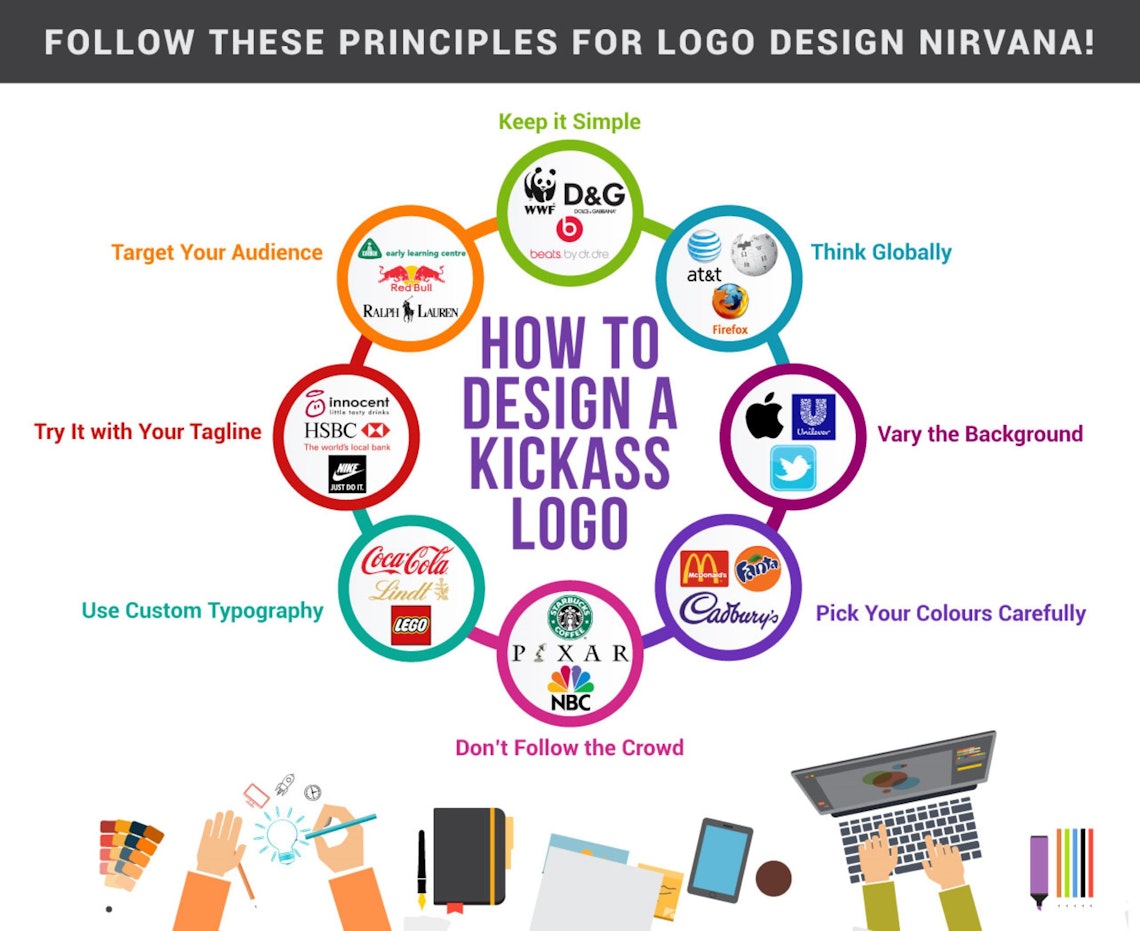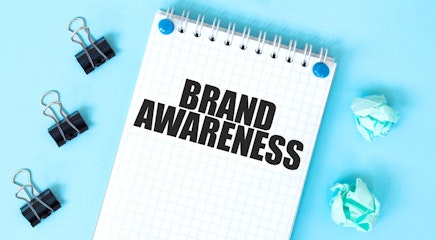Are you trying to design a new logo for your business and are struggling for ideas? Well, worry no more – we have researched eight key principles to think about for designing a memorable logo.
Take a look at the shareable graphic and written guide below the graphic which gives more details on each of the key points!
Embed The Graphic on your Site
Feel free to use the graphic on your site, linking to www.displaywizard.co.uk as a reference.

The Devil's in The Detail
1. Keep it Simple
A well-designed logo needs to be simple enough to be instantly recognisable to create positive brand recognition with just a glance.
With so many different companies vying for attention you need to be able to distil your brand into a single at-a-glance representation.
Whether it’s an animal, an object or the initials of your company’s name, all the best logos contain as little information as possible but with their own unique twist (think the bite out of the Apple logo or the innovative styling of ‘LG’ in their logo).
2. Think Globally
Even if your company isn’t aiming for world domination, having a logo that can cross cultural and linguistic divides will help people from different backgrounds relate to your brand.
Try to pick something that is accessible and will generate a positive response in people who see it. Often the best designs are intuitive, created using a graphic design tablet or a good old-fashioned pencil and paper by someone with a real feel for the company’s values. Of course, a professional designer is usually required to take these ideas to the next level so remember to ask them for several adaptations of your initial ideas.
3. Vary the Background
Although you may want to keep your logo in sync with your company’s brand guidelines and colour scheme, a good logo needs to be adaptable for use on multiple backgrounds across traditional and print media.
Primarily, you will need a light logo on a dark background and vice versa to allow for use on other websites and media.
4. Pick Your Colours Carefully
There is a huge amount of psychology associated with different colours, which can impact on your brand in a number of different ways.
You will need to research the emotional effects of different colours, and see which best apply to your business. For example, a brand for young people may require brighter, bolder colours such as red, yellow and orange whilst a company aiming towards older people may require calmer colours such as green or grey.
5. Don’t Follow the Crowd
It sounds obvious but the best way to make your logo memorable is to make it as distinct as possible from your competition. Firstly, checking against any existing trademarks will help you avoid any complicated legal issues that may come up in the future.
Secondly, having a unique logo that perhaps doesn’t relate to what you do will make your brand seem more self-assured and distinguish it from the rest of the crowd.
6. Use Custom Typography
If you want to be unique and don’t want to be copied, you will need your logo to be made using customised typography. This will obviously take longer and require more advanced design techniques.
Once again, the best place to start is with a pen and paper, sketching out your ideal style and then setting a professional designer to task!
7. Try it with Your Tagline
It is also useful if your logo can be used with and without your company’s tagline depending on the size which it is displayed.
Your tagline should summarise your business’s core values, so being able to include it with your logo is extremely useful for different marketing opportunities.
8. Target Your Audience
Think carefully about your target audience and what they value: is it a high-end brand looking to be prestigious or are you trying to appeal to a more cost-effective audience? Do you want to be innovative or traditional? Exciting or reliable?
People will base their whole judgement of your company on their first impression of your logo so think carefully about how it makes people feel by testing it on people outside of your organisation.Thanks for reading and if you think we have missed anything or you have any more tips, please leave a comment for us below!








